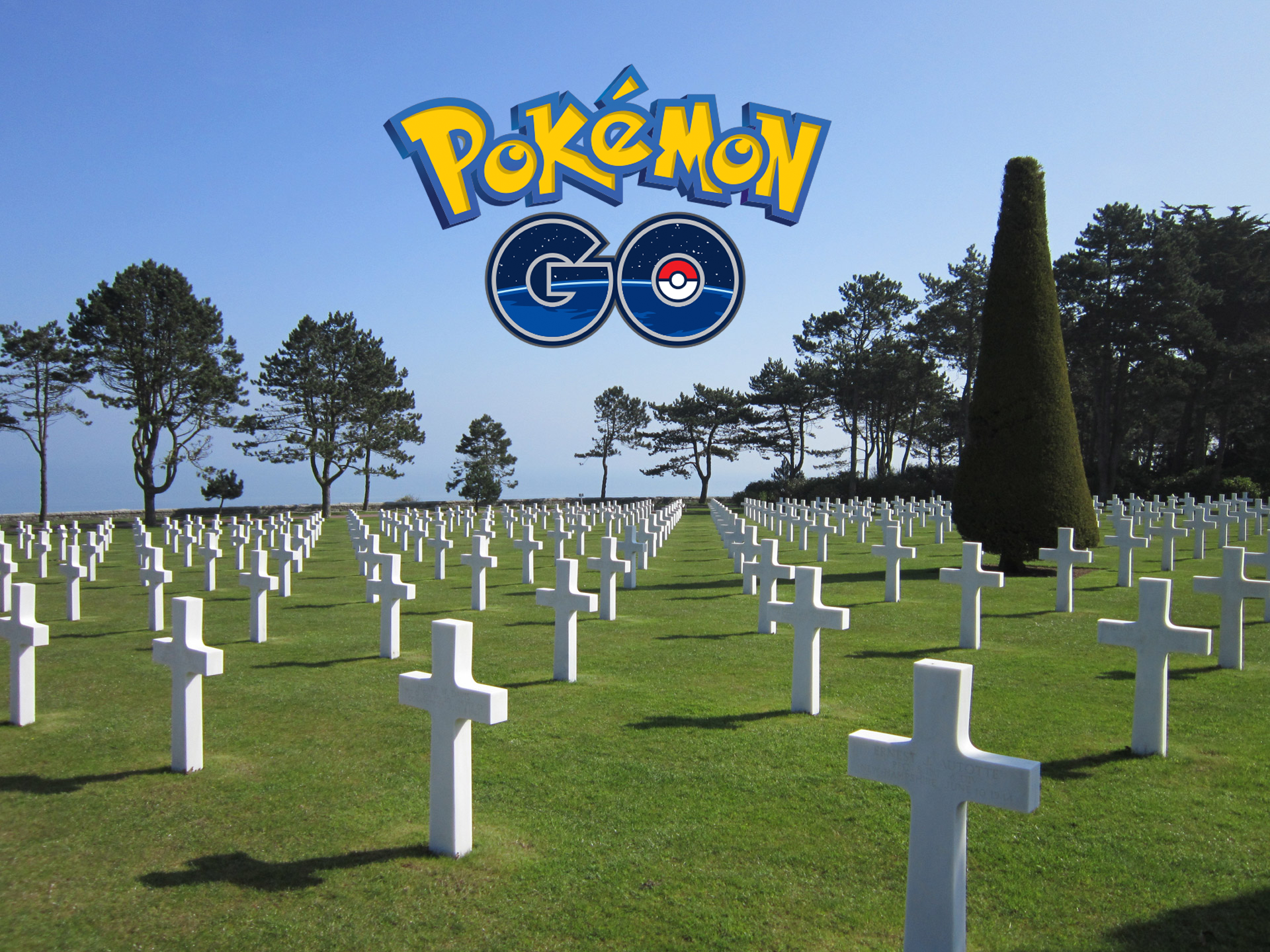Memory spaces in the face of the ‘Pokemon Go’ phenomenon
2 September 2016 : Memory spaces in the face of the ‘Pokemon Go!’ phenomenon.
Author: Marc Laurenceau
The ‘Pokemon Go’ game made its worldwide debut in July 2016 and was an instant hit with millions of users. These users travel miles with their smartphones to discover and collect virtual creatures. Problem: the famous creatures have also invaded places of remembrance such as military cemeteries and Holocaust museums.
Since the beginning of summer 2016, those in charge of memorial sites such as the American military cemetery in Arlington (USA), the Auschwitz concentration camp and the Douaumont ossuary near Verdun have been concerned about the presence of ‘gamers’ who visit these places of remembrance not to honour the memory of the dead, but simply to acquire imaginary creatures virtually.
In fact, the game’s creators have used software to distribute these famous ‘Pokemon’ around the planet. These creatures appear on the screens of smartphones using augmented reality, once the application has been installed. But the software responsible for distributing these creatures has not taken into account military bases, where traffic is obviously restricted, or memorial sites. The debate is now open: can Pokemon be accepted in military cemeteries or at sites dedicated to the memory of deceased soldiers?
Several establishments have already expressed concern about the lack of discernment on the part of the game’s administrators. The Holocaust Memorial and Arlington National Cemetery in the United States are now advising people not to ‘hunt’ Pokemon on their grounds. Even more shockingly, the developers of the American company Niantic did not think to remove the virtual creatures from the Auschwitz concentration camp. Pawal Sawicki, director of the museum located near this memorial site, has written a letter to Niantic requesting that the geolocation of the camp be removed from the application. « We find this kind of practice inappropriate. This is where thousands of people suffered, Jews, Poles, Roma, Russians and other nations », he explained. ‘We want to raise the general awareness of all games producers to respect the memory of the victims of this largest Nazi death camp of the Second World War’, he concluded.
Incidents have already broken out between veterans and players at places of remembrance, to the point of forcing the US Department of Veterans Affairs to install signs warning that the use of ‘Pokemon Go’ is prohibited at certain locations.
The Commonwealth War Grave Commission also sent a message on July 25, 2016, to users of the online game, asking them to respect the memorial sites where soldiers who fell during the last two world conflicts are buried.
While « Pokemon Go » players claim to explore different locations using augmented reality, some are prepared to do anything to complete their virtual collection, to the point of lacking discernment by continuing their activities in certain memorial spaces. More than ever, it appears necessary to educate players about the proper behavior in such places. But the role of developers is just as important: it is now up to them to remove the geolocations of virtual creatures from sites that have requested them. Niantic and Nintendo have partnered in a joint statement, explaining that they have chosen public monuments and museums around the world to centralize the game’s activities. A form to request the removal of Pokemon augmented reality in certain locations is now available on Niantic’s website. However, it is not yet clear whether certain memorial sites such as the Auschwitz concentration camp or military cemeteries will soon be removed from the Pokemon Go database.
2016 news of the Normandy landing beaches



